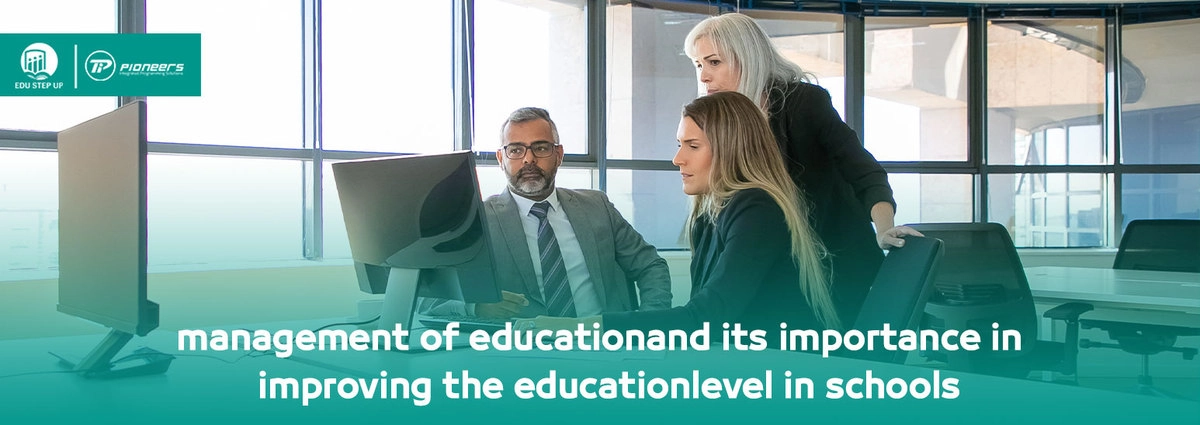
Sun 2022/10/23
The importance of using virtual classrooms in teaching and learning
A virtual classroom is an online teaching and learning environment where teachers and students can present course materials, engage and interact with other members of the virtual class, and work in groups together. The key distinction of a virtual classroom is that it takes place in a live, synchronous setting. Online coursework can involve the viewing of pre-recorded, asynchronous material, but virtual classroom settings involve live interaction between instructors and participants.
Recently, the world has witnessed a significant and noticeable change in the development of technology and its intervention in management, not only the management of companies and large commercial institutions, it also intervened in the management of educational institutions such as schools, institutes and universities, and contributed to organizing the administrative and educational process within them, and the replacement of the traditional paper-based system in management and follow-up with the advanced technological system.
Examples of technological tools that have been used in schools and educational institutions are the ERP School system or what is known as the educational enterprise resource planning system and the LMS system (Learning management system) to manage the educational process remotely, which helps in communication between students, teachers and parents.
And also the main objective of it is to create virtual classrooms to complete the educational process through it, regardless of the presence of students in school or anywhere else.
So, let's first get acquainted with the concept of virtual classes:
The definition of virtual classrooms or electronic is a direct and indirect learning environment and framework. It is similar to regular classes in that the student can participate in education directly with the teacher and his fellow students at the same time, the aim of it is to allow learners and teachers to participate and control learning communities using their own computers and smart devices such as tablets, mobiles and laptops to contribute to improving the quality of learning using advanced tools.
So, what are the advantages and disadvantages of virtual classes?
-
Virtual Classroom Features
- Ease of use.
- Not restricted to the presence of students or teachers at a specific time or place.
- Communication, interaction, continuous response and ease of follow-up.
- The cost is low compared to going to school and receiving lessons.
- The use of virtual classrooms does not require high technical skills.
- Covering large geographic areas and reaching students in remote locations.
- Possibility to record lessons for re-watching.
- Enhancing the student's research ability.
-
Disadvantages of virtual classrooms
- Inability of the student or teacher to use a computer or tablet.
- An internet must be available in order to use the virtual classroom.
- Educational content on the site must be available to students in a language they understand.
- The necessity of having a management and follow-up system for the virtual classroom system.
What are the reasons and importance of using virtual classrooms in learning
- Exchange of experiences between teachers.
- Continuous communication between students, encouraging them to participate and express their opinion, and providing an interactive environment for them.
- Reducing the spread of the phenomenon of private lessons.
- Ease of access to the material that was explained easily and refer to it at any time.
- Giving the opportunity to implement various experiments and different projects.
The difference between virtual classes and traditional classes
- Significant reduction in cost.
- The possibility of attending a large number of students and students from different geographical areas.
- Reducing the burden on the educational administration.
- The learning process is no longer confined to a specific place or time.
- Interaction, response and continuous follow-up from management.
- Obtaining feedback on the performance of students and teachers.
Teacher's duties in the virtual classroom
- Determine the objectives of the lessons that will be explained to the students.
- Setting a criterion or rating to evaluate his performance in the explanation and the extent to which these objectives are achieved.
- Follow up the attendance of students.
- Making the learning environment comfortable for students.
- Ensure that all students participate in the discussions that take place in the virtual classroom.
- Encouraging students to speak and express their opinion.
- Organizing the virtual class time so that it does not fall into the trap of randomness, which will expose students to not benefiting.
Therefore, relying on virtual classrooms has become important and in the coming days, it will become necessary and obligatory due to the technological development that is constantly increasing daily. Therefore, schools must keep pace with technological development and deal with ERP and LMS programs to advance the educational process in schools.
Leave Comment















Comments